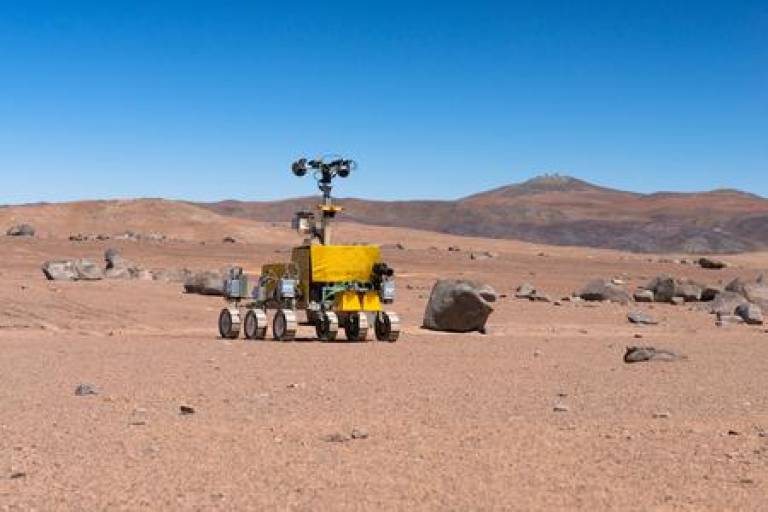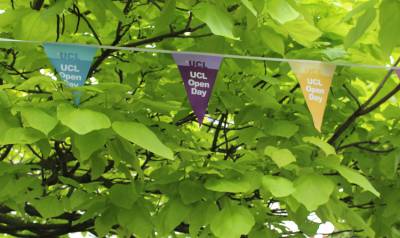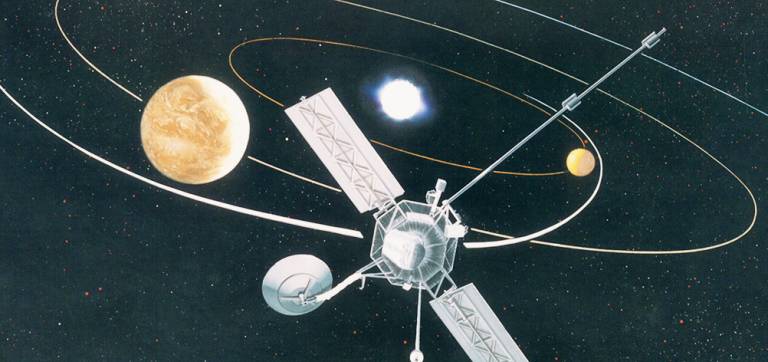ExoMars landing sites narrowed down
3 April 2014

The first landing site selection workshop for the ESA-Roscosmos
ExoMars rover was held on 26-28 March at the European Space Astronomy Centre near Madrid. Prof Andrew Coates
of UCL's planetary science group attended the meeting. Coates, based at UCL's Mullard Space Science Laboratory, leads the development of PanCam, the main camera on the rover. The international PanCam team
includes hardware from Germany and Switzerland, with important
contributions from Austria, as well as the UK.
PanCam includes a pair of wide angle cameras for stereo imaging and a High Resolution Camera for zoom capability. PanCam provides geological and atmospheric context for the mission.
The selection of the final landing site is a tricky combination of engineering constraints and scientific interest. The heat resistant tiles and parachutes of the landing system need enough time to operate in the thin Martian atmosphere before a safe landing of the 300kg rover, so the landing has to be below a certain level. In addition, the rover is solar powered, so the landing needs to be near the equator where there is most sunlight.
But the location must also be scientifically interesting. The overall goal of the ExoMars mission is to search for signs of life 3.6 billion years ago. For this, it will need a location where it can study signs of past water, either in the form of clays (phyllosilicates, which can be seen form orbit), or physical features like rivers and deltas. Unlike all previous Mars probes, ExoMars will be able to drill up to 2m under the harsh Martian surface environment to search for these features.
Prof Coates says: "We had a vote on Thursday evening to
narrow the site selection down from 8 to 4. It was very exciting to have a say in
this, as well as providing the PanCam perspective for the whole meeting, just
before the vote."
The chosen sites, Mawrth Vallis, Oxia Planum, Hypanis Vallis and Oxia Palus, provide some excellent scientific targets. Peter Muller and colleagues from the MSSL Imaging group also attended the meeting, along with Pete Grindrod of UCL-Birkbeck Centre for Planetary Sciences.
* * *
Meanwhile in the UK Airbus Defence & Space were opening their new 'Mars Yard' for rover testing in Stevenage, and this was featured, with a sequence shot at MSSL of a PanCam model and Prof Coates explaining the science of the mission, on BBC News Online, BBC 1 Breakfast, BBC 1 O'clock News and BBC World.
Notes
- The ExoMars project, a joint programme of the European Space Agency and Roscosmos (Russian Federal Space Agency), involves two missions: ExoMars EDM and Orbiter, which will land a static probe on the Martian surface, and which launches in 2016; and ExoMars Rover, which launches in 2018.
- UCL Mullard Space Science Laboratory is leading the development of the main camera (PanCam) for the ExoMars rover. This will be the most powerful camera ever to land on the surface of Mars.
Related links
- ESA
- Roscosmos - Russian Federal Space Agency
- UCL Mullard Space Science Laboratory
- Recent Nature Podcast
- BBC story on Mars Yard opening
High-resolution image
This image can be reproduced freely providing the source is credited
Researcher profile
Science contact
Andrew Coates
UCL Mullard Space Science Laboratory
a.coates@ucl.ac.uk
Media contact
Oli Usher
UCL Faculty of Mathematical and Physical Sciences
020 7679 7964
o.usher@ucl.ac.uk
 Close
Close




